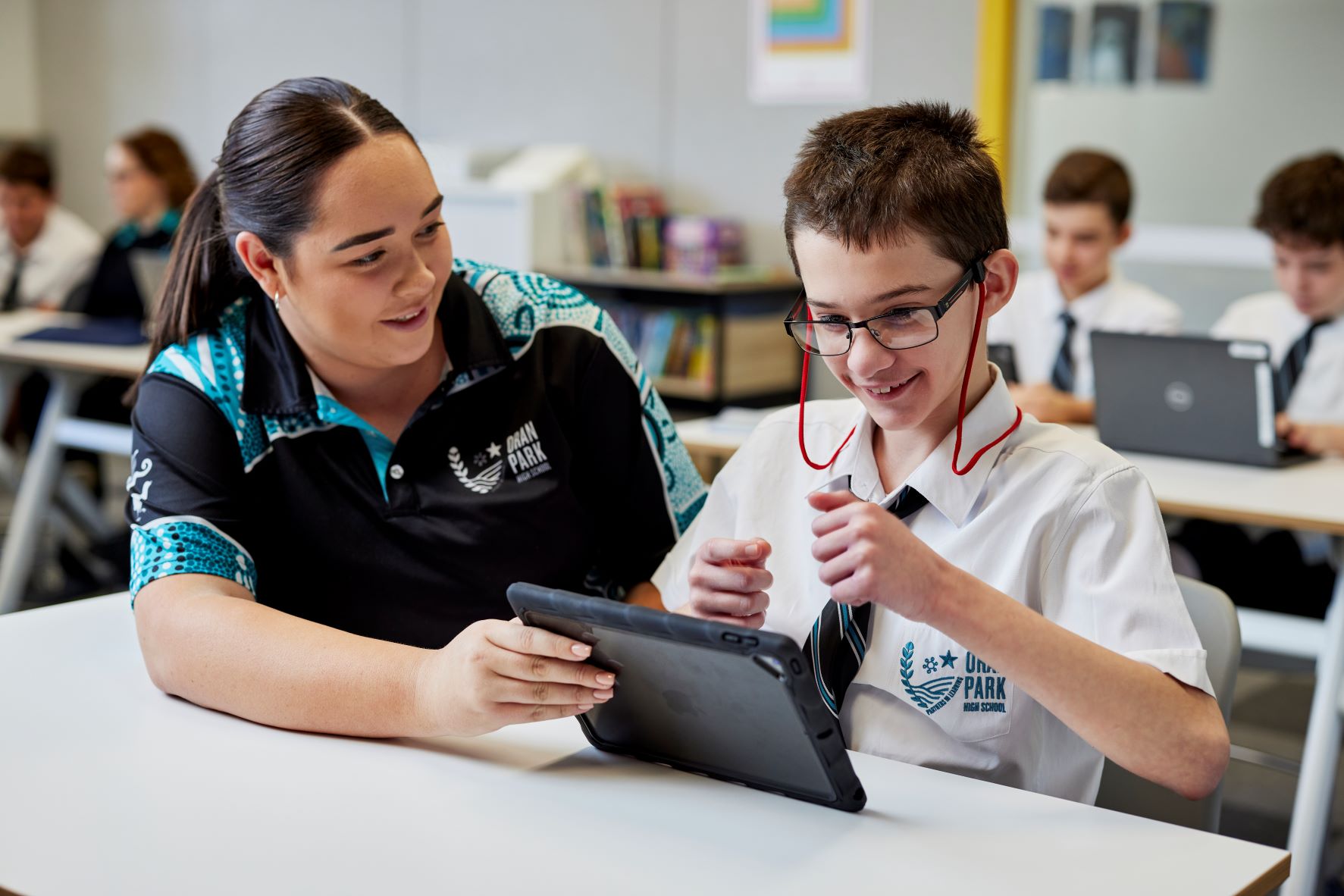Examples of practice - Sam
Sam is a 12-year-old student who is sociable, enthusiastic, and enjoys music, technology, and helping with the school vegetable garden. Sam has complex support needs. Sam uses technology and gestures to communicate and has some difficulties with receptive language. Sam receives support for activities of daily living, including eating and toileting. Sam’s learning is primarily provided through visual and interactive resources on his touch-screen device. Sam has a personalised learning and support plan, however this is due to be reviewed and updated. This example of practice will outline how Sam’s school and family worked together to support Sam’s voice and agency when revising his personalised learning and support plan.
What is the goal?
The goal is for Sam to have an active role in his learning, including in setting the goals, supports and strategies that will support his learning and inclusion at school. This means that Sam’s voice, preferences and experiences are positioned as central to all decisions made, and Sam’s participation in personalised learning and support planning is optimised and actively increased over time through supports and strategies that a) are adapted for his strengths, communication style, and abilities; and b) ensure he feels safe, confident, and valued.
What are Sam’s preferences for his involvement in learning and support planning?
The learning and support team use the Planning tool for promoting student agency within planning personalised learning to develop a clear understanding of Sam’s preferences for his involvement in learning and support planning. To cater for his strengths and abilities, they select a few questions that are most relevant to him, and provide these in a visual format on his device so he can respond there. From this, they can see that:
Sam would like to attend meetings, with his father there to support him.
Sam would like to co-lead the meeting. He wants to welcome everyone to the meeting, and change the slides when it is time for the next point on the agenda.
Sam would like to share his preferences in a video presentation.
Sam would like a teacher to help him create the video presentation. He also asks for a friend to be involved too.
What do we know about Sam’s strengths, abilities, communication style, interests and strategies that have been helpful, that may be relevant for Sam’s involvement in learning and support planning?
Sam is sociable and enthusiastic.
Sam enjoys music, and technology.
Sam enjoys helping with the school vegetable garden.
Sam uses technology and gestures to communicate, and has difficulties with receptive language.
Sam receives support for activities of daily living, including eating and toileting.
Sam’s learning is primarily provided through visual and interactive resources on his touch-screen device.
What evidence-informed strategies can be used to reach the goal?
The learning and support team used the Student agency within planning personalised learning and support guide to learn more about evidence-based strategies and resources that support student agency. After using this resource, the learning and support team and Sam identified some strategies that can be trialled to build on Sam’s existing strengths and help achieve the desired goal:
| Relevant strengths and insights | Strategies |
|
To develop an understanding of Sam’s goals, ideas and preferences, collaborate with and support Sam with implementing the following strategies:
|
|
To support Sam in leading and co-leading the learning and support planning meeting, collaborate with and support Sam with implementing the following strategies:
|
|
|
School Excellence Framework alignment
Wellbeing
Effective classroom practice
Australian Professional Standards for Teachers alignment
Standard 1: Know students and how they learn
Audience
Secondary teachers
Purpose
This example of practice can be used to inform school planning and teaching practice
Timeframes and when to use
This resource can be used at any time to provide further information and practice guidance
Evidence base
This resource was developed with the AllPlay Learn team who conducted a series of systematic reviews of the empirical literature, with over 177,000 articles screened. The resources remain up-to-date, with content reflecting best practice reviewed by a world-class multidisciplinary research team, led by Monash University.
Reviewed
June 2022. Share your feedback hereExternal link
